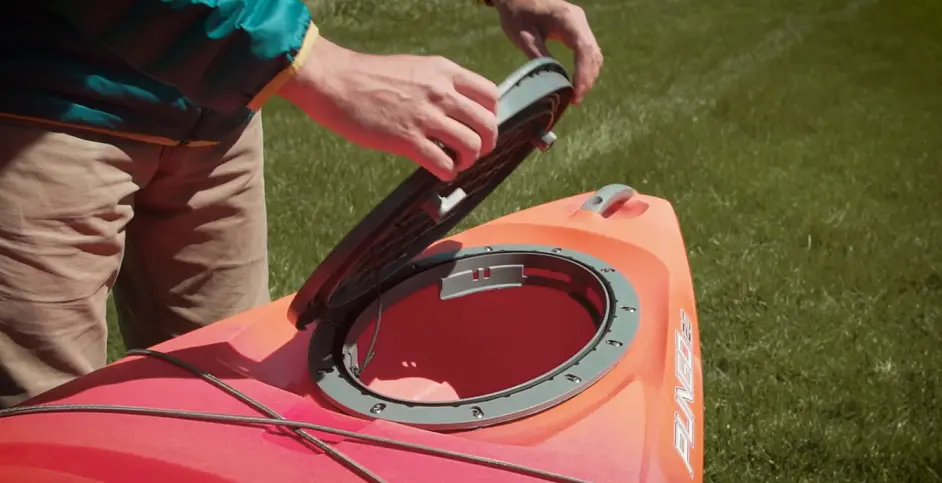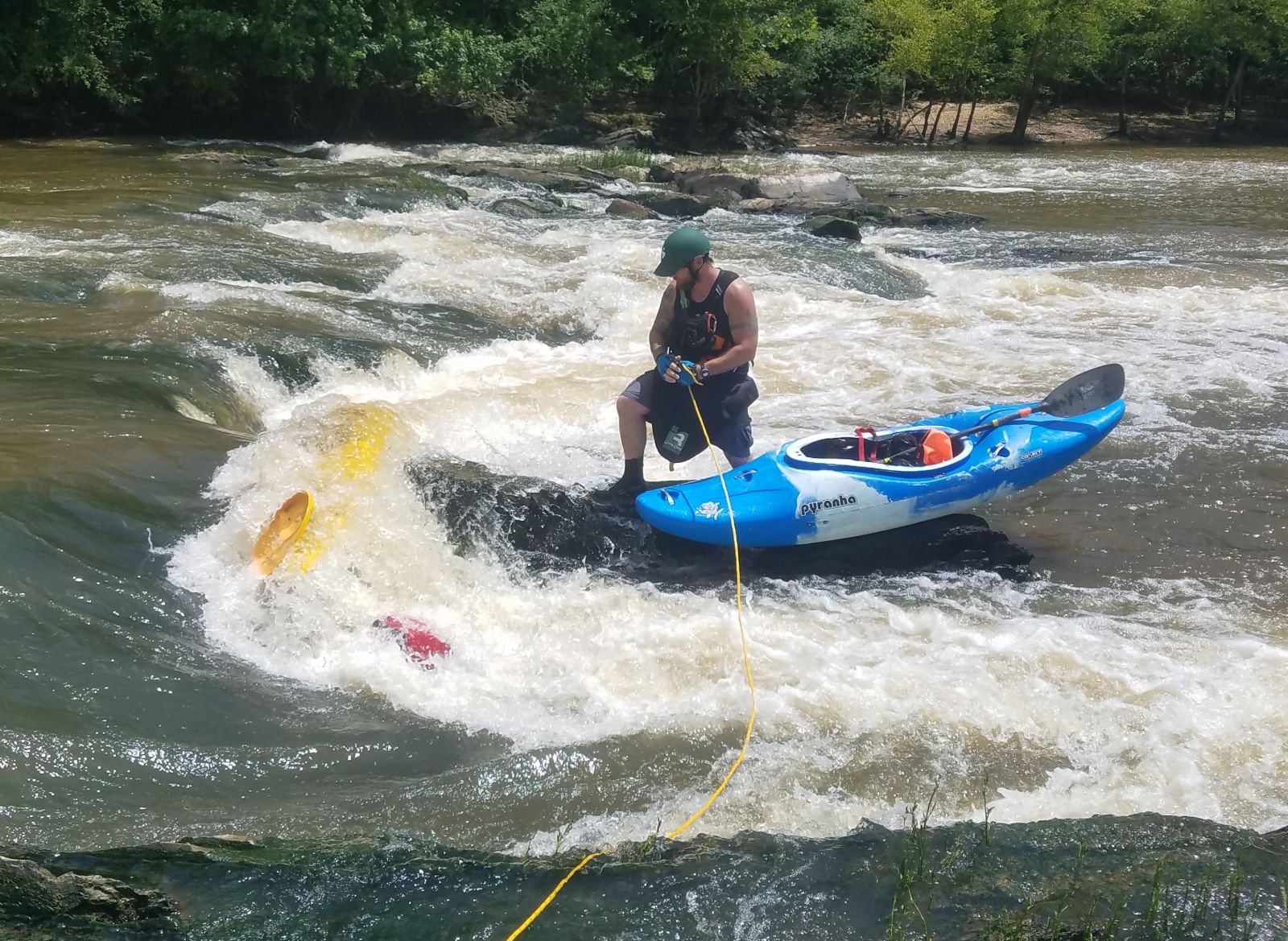When it comes to kayaking, one critical factor that every paddler needs to consider is the Cubic Feet per Second (CFS) of the river or waterway they are navigating. Understanding CFS is essential for your safety and enjoyment on the water. In this comprehensive article, we will delve into the concept of what is a good CFS for kayaking and why it matters in kayaking. Let’s get started.
What is CFS?
Cubic Feet per Second, or CFS, is a unit of measurement that quantifies the flow rate of water in a river, stream, or any waterway. Essentially, it tells you how much water is flowing past a specific point in a river in one second. Knowing the CFS can help you assess the water’s speed, force, and potential hazards, making it a crucial data point for kayakers.
Why is CFS Important in Kayaking?

Assessing Water Speed and Force
The flow rate, represented by the CFS, directly impacts how fast the water moves. High CFS means fast, powerful currents, while low CFS signifies slower, calmer waters. As such, knowing the CFS can help you determine if a river’s conditions align with your skill level.
Evaluating Hazards
High flow rates can hide or exacerbate underwater hazards like rocks and tree limbs, while low flow rates may expose kayakers to scraping or getting stuck. A moderate CFS might allow for the safest, most enjoyable experience, but “moderate” can differ based on the river and the individual kayaker’s skills.
Planning and Preparedness
Understanding the CFS can help you better plan your trip, including how long it will take to navigate a particular stretch of river, what kind of equipment you’ll need, and what safety measures to consider.
How is CFS Measured?
The measurement of CFS is generally done using hydrological instruments and methodologies, such as flow meters and hydrographs, often managed by government agencies. Many countries and states have hydrological stations that monitor and publish real-time CFS data, which can usually be accessed online.
For a simplified calculation, CFS can be determined by multiplying the river’s cross-sectional area by its average velocity. However, for accurate and reliable data, it is best to consult verified sources.
Factors that Affect CFS
Seasonal Changes
Seasons have a significant impact on CFS. Spring melts can cause high CFS, while the hot summer months can reduce it drastically.
Rainfall and Storms
Heavy rains and storms can cause sudden changes in CFS, leading to flash floods and rapidly altering conditions.
Human Influence
Dams, water diversions, and other custom structures can significantly impact a river’s natural flow rate, and hence its CFS.
Ideal CFS Ranges for Various Kayaking Styles
Recreational Kayaking
For beginners and those looking for a laid-back kayaking experience on kayak, a lower CFS range between 200 to 700 is usually considered good.
Whitewater Kayaking
For this more advanced form of kayaking, a higher CFS ranging from 1,000 to 5,000 might be suitable. However, this largely depends on the skill level of the kayaker and the specific class of rapids.
Sea Kayaking
Sea kayaking doesn’t usually involve CFS considerations in the same way as river kayaking does. However, understanding tide currents, which can be roughly analogous to river flow rates, is essential.
Safety Considerations
Always Check Real-Time Data
Conditions can change rapidly, so it’s crucial to check the most up-to-date CFS data before embarking on your kayaking adventure.
Know Your Skill Level
Be honest about your skills and never venture into water conditions that exceed your abilities.
PFD and Gear
Regardless of the CFS, always wear a Personal Flotation Device (PFD) and other appropriate safety gear.
Conclusion
Understanding CFS is essential for a safe and enjoyable kayaking experience. While the “ideal” CFS can vary depending on numerous factors—including the type of kayaking, the particular river, and the skill level of the kayaker—being knowledgeable about flow rates can better prepare you for your next kayaking adventure. Always remember to check real-time data, assess your abilities honestly, and take all necessary safety precautions. With the right preparation, you can ensure that you’re paddling in conditions that are not just suitable, but also enjoyable.
Read more about kayaks:
- What to Wear for Kayaking in Summer
- How to Store a Kayak in the Garage
- What is a Skeg on a Kayak
- What is a Tandem Kayak
- How to Build a Homemade Kayak Launch
- How to Get in a Kayak
- What to Wear for Kayaking?
- How to Transport a Kayak Without a Roof Rack?
- How to Build a Kayak Rack for an RV?
- Are Inflatable Kayaks Safe?
- How to Build a Rack for Kayaks?
- Do Kayaks Have a Weight Limit?
- Wilderness Systems Pungo 120 Kayak Review
- Is it hard to kayak?
- How to Lock a Kayak?
- Where to Kayak with Manatees?
- Pungo 120 vs 125: Which is the Better Choice?
- Tips to Prevent a Kayaking Flip Over and Stay Safe
- Why Are Kayaks So Expensive?

Hi, I’m Steve, the passionate kayaking enthusiast behind Outdoor Bravo. As an avid adventurer and nature lover, kayaking has been a central part of my life for as long as I can remember. My love affair with the water began during my childhood, and it has only grown stronger over the years. From serene lakes to rushing rivers and even challenging ocean tides, I’ve navigated various water bodies, seeking new thrills and unforgettable experiences.
